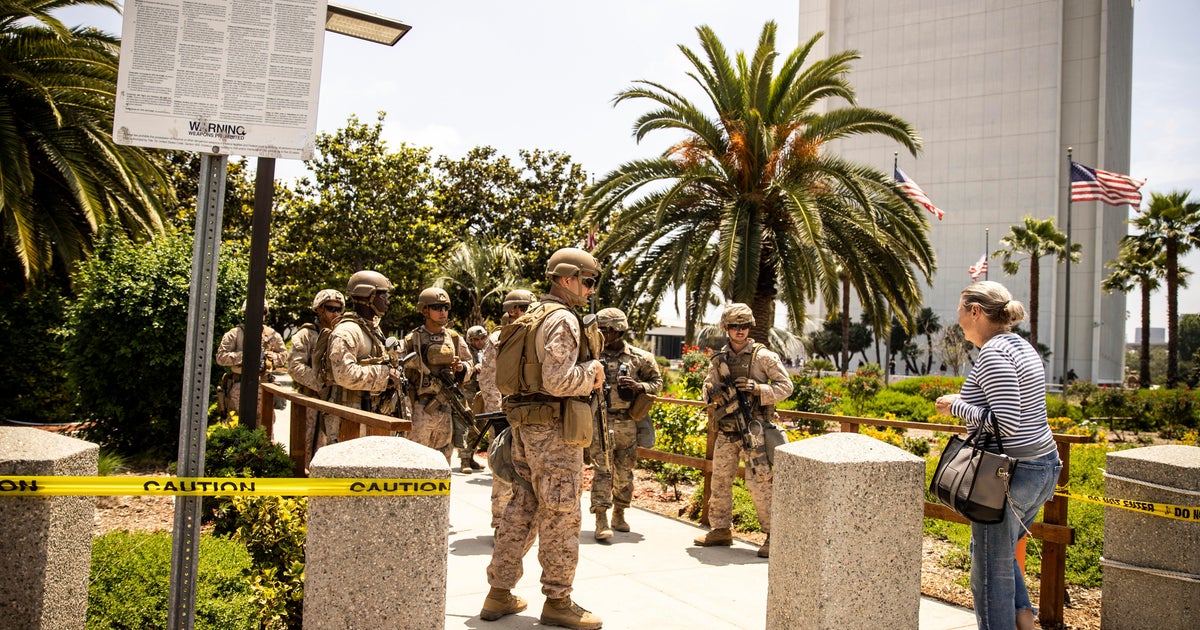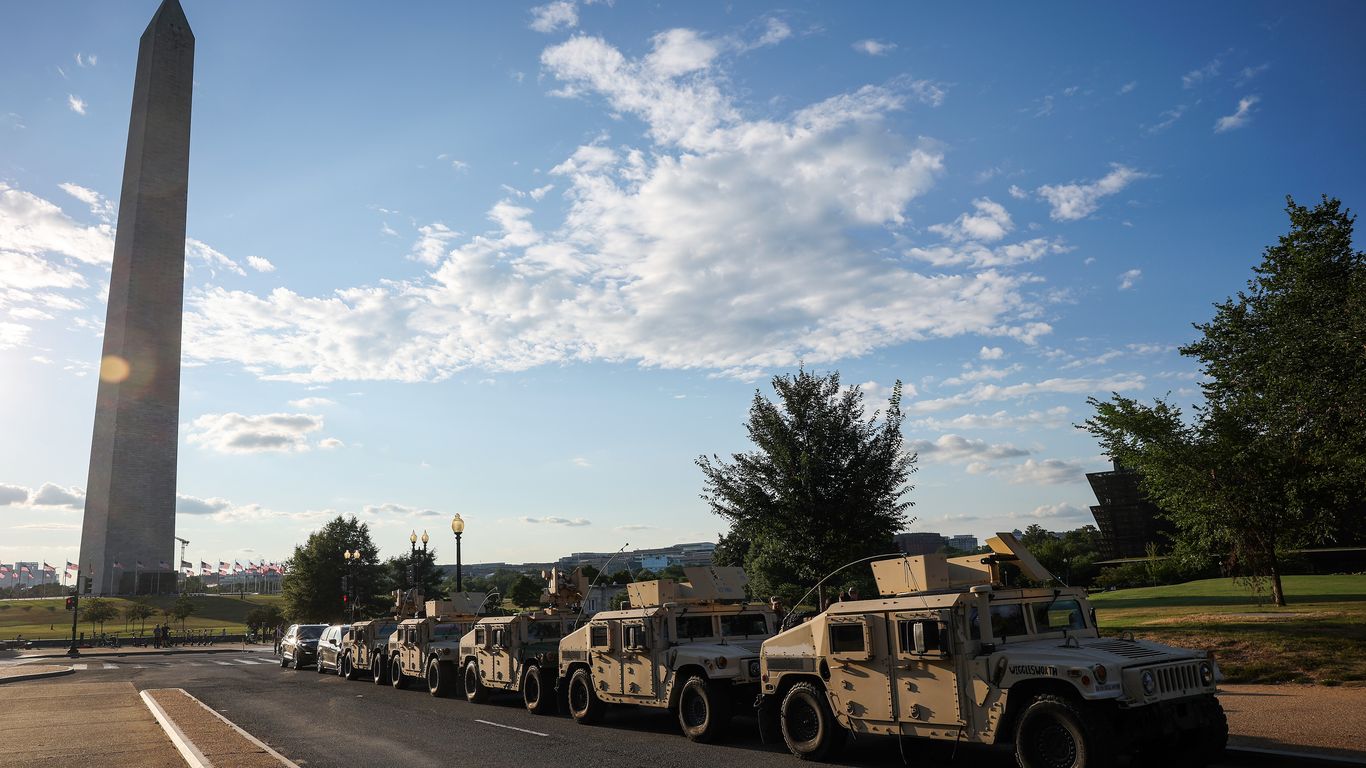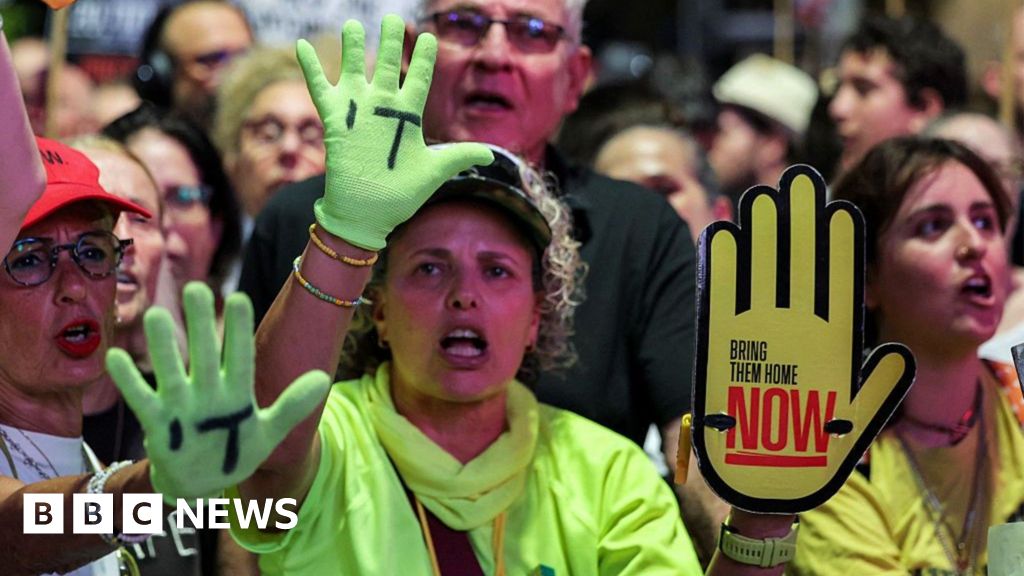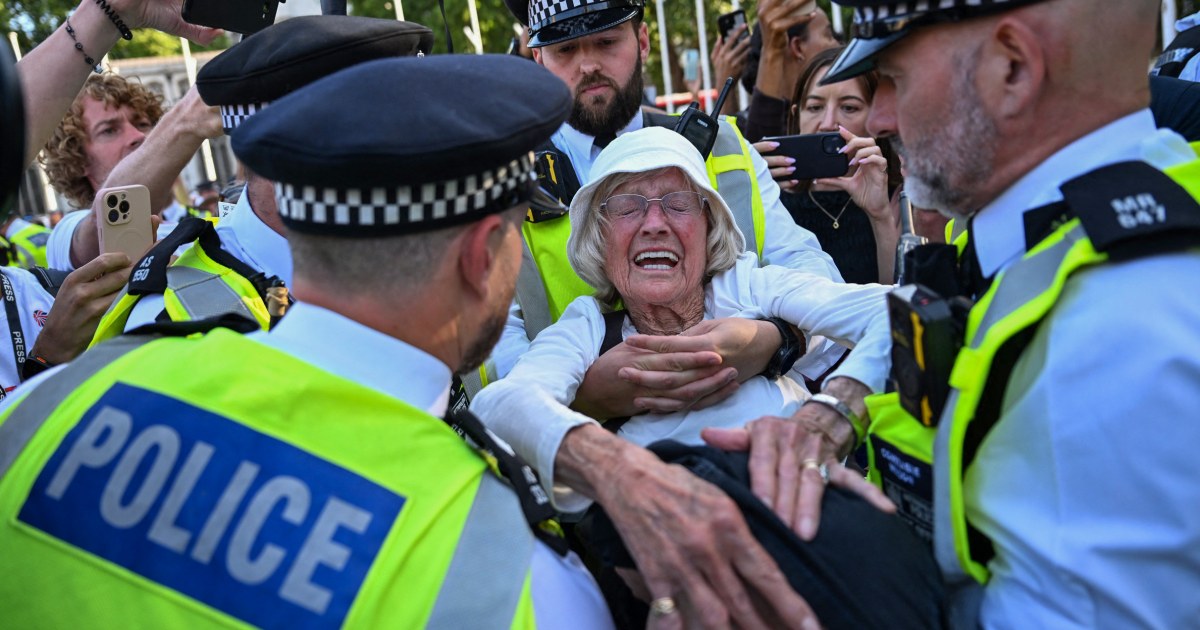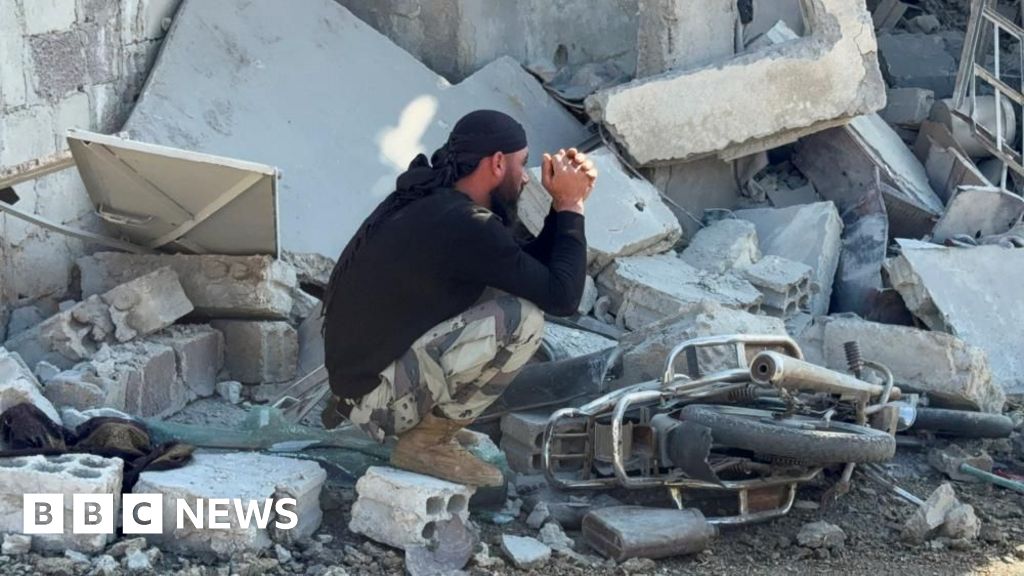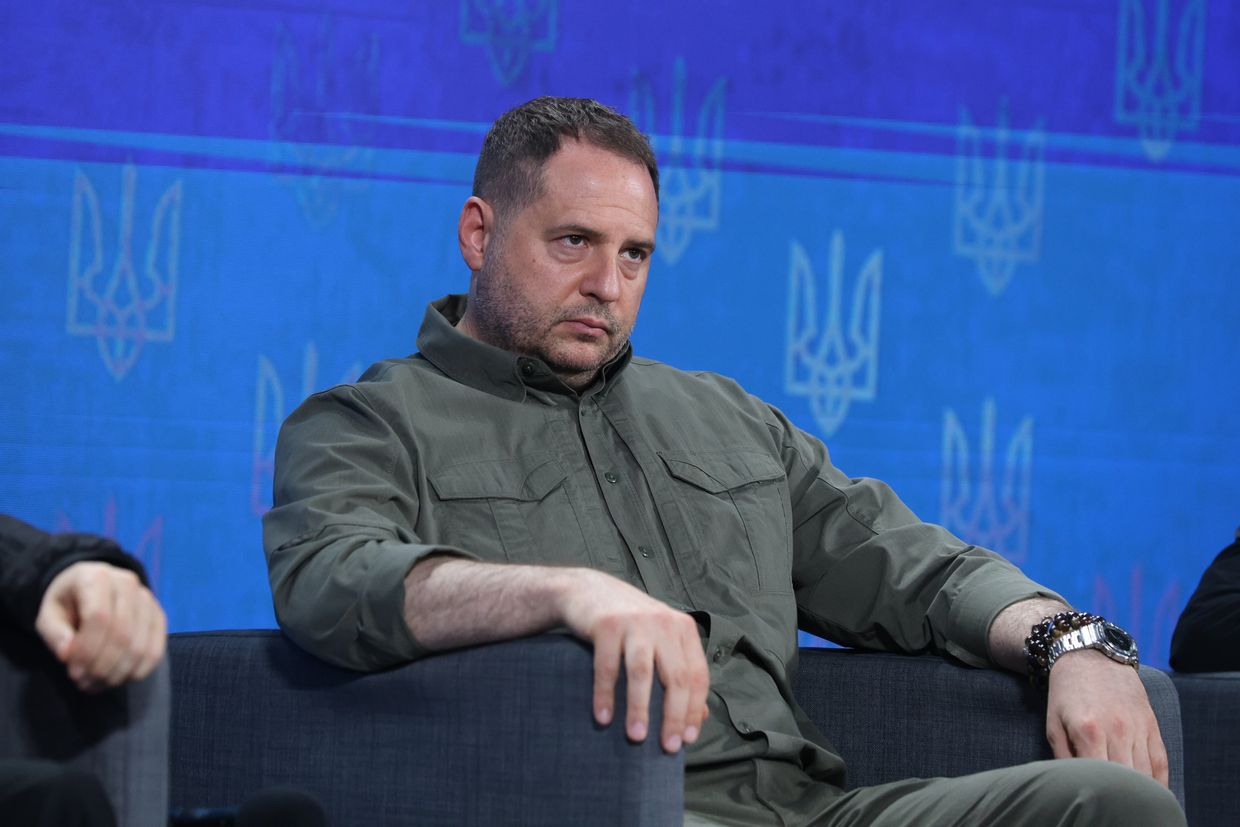West Virginia Sends National Guard to DC Amid Protests
#west_virginia #national_guard #dc #protests #militarization
Introduction
In response to the Trump administration's takeover of the District of Columbia's police department, West Virginia is sending 300 to 400 members of its National Guard to assist in the transition. This move by a nearby state comes as hundreds of District of Columbia National Guard members were being deployed to assist in the protests against police brutality and systemic racism.
Key Details
The National Guard members from West Virginia will be providing support to the city's police department, allowing them to focus on the ongoing protests. This deployment is in addition to the 1,200 National Guard members already stationed in the nation's capital. The move has raised concerns about the militarization of the city and the potential for escalation of violence.
Impact
The deployment of additional National Guard members from a neighboring state highlights the tense and unprecedented situation in the nation's capital. It also raises questions about the federal government's response to the protests and the use of military force in civilian situations. This move could potentially exacerbate the already volatile situation and further erode trust between communities and law enforcement.
About the Organizations Mentioned
Trump administration
The **Trump administration** refers to the executive branch of the U.S. federal government during Donald J. Trump’s presidency, initially from January 20, 2017, to January 20, 2021, and resuming with his second term starting in 2025. It was characterized by a mix of aggressive domestic policies, significant judicial appointments, and a distinct foreign policy approach that emphasized "America First" principles[4][8]. The administration’s key activities included **tax reform**, notably passing the $3.2 trillion Tax Cuts and Jobs Act, which represented the largest overhaul of the U.S. tax code in decades[5]. Trump also renegotiated trade agreements with major economies including Mexico, Canada, China, Japan, and South Korea, prioritizing bilateral deals over multilateral ones such as the Trans-Pacific Partnership (TPP), which the administration withdrew from early on[1][2]. The administration sought to protect American jobs by restricting cheap foreign labor and influencing agencies like the Tennessee Valley Authority to retain American workers[5]. On the judicial front, the Trump administration appointed over 200 federal judges, including three Supreme Court justices—Neil Gorsuch, Brett Kavanaugh, and Amy Coney Barrett—shaping the judiciary for years to come[4]. These appointments were among the most significant achievements, influencing U.S. law on multiple fronts. In foreign policy, the administration pursued a controversial agenda: it imposed travel bans on several predominantly Muslim countries, withdrew U.S. troops from northern Syria, and supported Saudi Arabia militarily despite congressional opposition related to the Yemen conflict[1][3]. It also fostered new international technology alliances, such as securing commitments from allies to exclude Chinese telecom giant Huawei from 5G infrastructure and signing AI cooperation agreements with the UK[5]. The Trump administration faced substantial political turmoil, including two impeachments by the House of Representatives—first in 2019 over Ukraine dealings, and again in 2021 following the January
District of Columbia police department
The District of Columbia Metropolitan Police Department (MPD) is the primary law enforcement agency serving Washington, D.C., and is among the ten largest local police agencies in the United States. Established in 1861 by congressional statute amid Civil War unrest, MPD was created to centralize policing across the District, replacing earlier fragmented local watch systems. Its founding was personally endorsed by President Abraham Lincoln due to the heightened security needs of the nation’s capital at that time[1][2][4]. MPD has a long and distinguished history, playing key roles in major national events such as investigations following President Lincoln’s assassination, the apprehension of President Garfield’s assassin, and managing security during presidential inaugurations and national parades. The department’s evolution includes milestones like appointing women officers in the late 19th and early 20th centuries and establishing formalized training schools to professionalize the force. Over time, it expanded its size, scope, and expertise while balancing traditional policing with community partnership approaches[2][5]. Today, MPD is recognized for integrating advanced technology in crime fighting, including sophisticated evidence analysis and state-of-the-art information technology systems. This technological edge, combined with a community policing philosophy, aims to strengthen collaboration between police and residents to improve overall quality of life in the District. MPD’s motto, "Policing with Purpose. Serving with Care," reflects this commitment. Chief of Police Pamela A. Smith leads the department, emphasizing high professional and ethical standards[1]. Besides traditional law enforcement duties, MPD is subject to rigorous oversight related to use-of-force policies and handling of citizen complaints, reflecting contemporary demands for transparency and accountability. The department continuously adapts to meet the security challenges of a dynamic, diverse urban environment while maintaining public trust[3]. In summary, the District of Columbia Metropolitan Police Department combines a rich historical legacy with modern policing innovations and community engagement, serving a critical role in safeguarding the nation's capital.
West Virginia National Guard
The **West Virginia National Guard (WVNG)** is a joint military force under the West Virginia Department of Military Affairs and Public Safety, comprising the West Virginia Army National Guard and the West Virginia Air National Guard. With over 6,800 Soldiers, Airmen, and civilians, it serves dual federal and state roles, uniquely combining state emergency response with national defense duties[1][2]. The WVNG traces its roots to 1735 with the 201st Field Artillery, the oldest active U.S. Army regiment, initially formed as a Virginia militia. Today, the Guard maintains 38 units across 22 counties and supports various overseas missions, including Operation Iraqi Freedom, Operation Enduring Freedom in Afghanistan, and peacekeeping in Kosovo[1]. Its **three-fold mission** includes: - A **Federal Mission** to maintain combat-ready units for mobilization in support of U.S. military strategy; - A **State Mission** to protect life, property, and public safety during emergencies under the governor’s command; - A **Community Mission** to contribute positively to local communities[1][2]. The WVNG actively supports homeland security, disaster response, and law enforcement assistance throughout West Virginia. It operates under the governor’s control during peacetime but can be federalized by the President during national emergencies[2]. The organization emphasizes readiness, lethality, and preparedness, reflecting a warrior ethos committed to defending West Virginia and the nation. Noteworthy is the Guard’s integration into community life and business, fostering partnerships with employers and policymakers to meet increasing demands amid federal budget constraints[5]. The Guard’s technological and operational capabilities position it as a critical component in both state security and broader U.S. military strategy. In summary, the West Virginia National Guard is a historically rich, strategically vital organization that blends traditional military readiness with modern homeland security and community support roles, making it a key player in both defense and state emergency management[1][2][5].
District of Columbia National Guard
## Overview The District of Columbia National Guard (DCNG) is a unique military organization responsible for both federal and local missions within the nation’s capital. Unlike National Guard units in the 50 states, which are under the authority of their respective governors, the DCNG is legally under the direct command of the President of the United States due to Washington, D.C.’s status as a federal district[1][3]. This distinctive arrangement reflects the city’s unique constitutional and political position. ## Mission and Activities The DCNG’s primary mission is to provide rapid, effective response to emergencies—ranging from natural disasters to civil disturbances—while supporting the continuity of District government operations[2]. Its members are trained and equipped as part of the U.S. Army and Air Force, and they are eligible for all U.S. military awards, in addition to local honors[1]. The organization is structured into both Army and Air components, each led by a general officer, with a major general serving as overall commander[3]. Key activities include disaster relief, public safety support, and community engagement. For example, in late 2025, DCNG personnel partnered with local organizations like the Capital Area Food Bank to address food insecurity, demonstrating their role beyond traditional military duties[4]. The Guard also works closely with the Metropolitan Police Department, with thousands of National Guard members recently mobilized to enhance public safety across the District[4]. ## Historical Context The DCNG traces its origins to 1802, when President Thomas Jefferson established it to defend the newly created capital[1]. Over the centuries, it has played a role in numerous national crises, including civil unrest and wartime support. During the Vietnam War, D.C. Air National Guard pilots volunteered for combat, with some making the ultimate sacrifice[3]. The Guard’s legal framework is also unique: federal law delegates supervision to the Secretary of Defense, who in turn designates officials to administer its affairs
city's police department
## Overview A city’s police department is the primary law enforcement agency responsible for maintaining public safety, enforcing local and state laws, and providing emergency response within the municipality. Its core mission is to enhance the quality of life by reducing crime, preserving peace, protecting people, and fostering a fair and safe community through partnership and innovation[2]. Police departments are typically structured with a clear hierarchy, led by a civilian police commissioner (or chief) appointed by the city’s mayor, with operational command vested in sworn officers and specialized units[1][4]. ## Functions and Operations Daily operations include patrolling neighborhoods, responding to emergencies, conducting criminal investigations, making arrests, collecting evidence, issuing citations, and preparing reports for court proceedings[6][7]. Officers also engage in community outreach, traffic enforcement, and specialized tasks such as counterterrorism, cybercrime, and crisis negotiation, often supported by advanced technology and data-driven strategies[4][6]. The department is usually organized into bureaus and precincts, each focusing on specific functions like patrol, detective work, transit, and special operations[4][6]. ## Historical Context The modern city police department traces its roots to the 19th century, evolving from informal watch systems to professional, full-time agencies. The New York City Police Department (NYPD), for example, was established in 1845 and has since become a model for urban policing worldwide[6]. Over time, police departments have adapted to societal changes, technological advancements, and shifting public expectations, often serving as laboratories for innovation in crime prevention and community engagement. ## Key Achievements Notable achievements include significant reductions in violent crime rates in major cities, the development of community policing models, and the integration of real-time data analytics for predictive policing[2]. Departments have also pioneered the use of body-worn cameras, license plate readers, and digital evidence management systems, enhancing both accountability and operational efficiency. ## Current Status and Notable Aspects Today, city police
federal government
## Overview of the U.S. Federal Government The U.S. federal government is the central governing body of the United States, established by the Constitution in 1789. It is structured into three branches: **legislative**, **executive**, and **judicial**, each designed to ensure a balance of power and protect citizens' rights[1][2][3]. ### Organization and Responsibilities - **Legislative Branch**: Composed of Congress (House of Representatives and Senate), it creates laws, declares war, and regulates commerce[1][2]. - **Executive Branch**: Led by the President, it enforces laws, manages federal agencies, and oversees national defense[1][4]. - **Judicial Branch**: Consists of the Supreme Court and other federal courts, interpreting laws and ensuring constitutional compliance[1][3]. ### History and Key Achievements The U.S. federal government has a rich history, with significant achievements including the establishment of a robust legal system, the expansion of civil rights, and the development of a strong economy. Key milestones include the ratification of the Constitution, the Civil Rights Act of 1964, and the ongoing efforts to adapt to technological advancements. ### Current Status and Notable Aspects Currently, the federal government continues to evolve, addressing challenges such as technological innovation, climate change, and global economic shifts. Notably, the system of checks and balances ensures that no branch becomes too powerful, maintaining a balance of authority[5][6]. The federal government also plays a crucial role in regulating industries, supporting research and development, and providing essential services like education and healthcare. ### Impact on Business and Technology The federal government's influence on business and technology is profound. It sets regulatory frameworks, provides funding for research, and supports innovation through various programs. For instance, government agencies like the National Institutes of Health (NIH) and the National Science Foundation (NSF) are pivotal in advancing scientific research and technological development. In
law enforcement
**Law enforcement** refers to government agencies and officers responsible for maintaining public order, enforcing laws, and protecting life and property within defined jurisdictions. These agencies include local police, state police, highway patrols, and federal bodies, each with specific roles and powers to investigate crimes, arrest suspects, and ensure public safety[2][3][4]. Historically, law enforcement has roots dating back to ancient societies, evolving as organized entities tasked with upholding societal rules and norms. Modern law enforcement agencies are empowered by governments with legal authority such as arrest, search, seizure, and the use of force, all regulated by judicial oversight to balance public safety with individual rights[2][4]. The core functions of law enforcement include community policing, crime investigation, emergency response, crowd control, and collaboration with other agencies and the public. Community policing emphasizes building trust and cooperation with the community to proactively reduce crime and address social issues. Specialized units within agencies handle complex investigations, cybercrime, narcotics, and more[1][3]. Key achievements of law enforcement include the development of investigative techniques, forensic science advancements, and the integration of technology such as body cameras, data analytics, and digital communication systems, which have significantly enhanced operational efficiency and accountability. Law enforcement also plays a critical role in the criminal justice system by gathering evidence and supporting legal processes that uphold justice and due process[1][4][6]. Currently, law enforcement agencies continue to adapt to emerging challenges including cybercrime, terrorism, and social justice concerns. Many agencies pursue accreditation and professional standards to improve transparency and effectiveness[7]. The integration of technology and data-driven approaches is reshaping policing strategies, making law enforcement a dynamic field essential to societal stability and rule of law. In summary, law enforcement agencies serve as the frontline defenders of legal order, balancing enforcement with community engagement and technological innovation to protect and serve society in an increasingly complex world.
